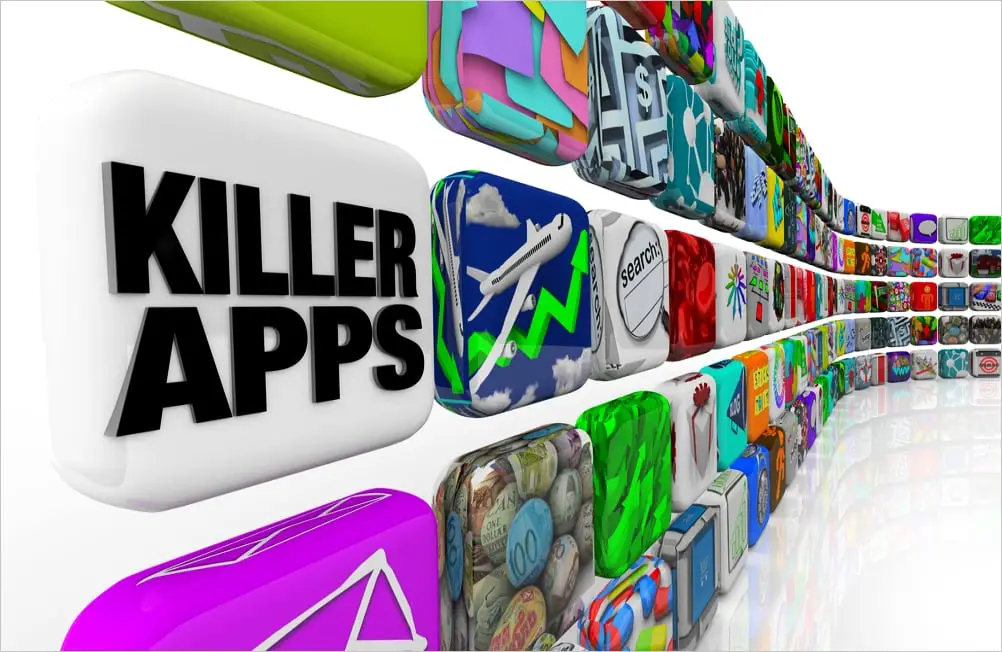
The buying behavior changes are noticeable as the technology advancement continuously penetrates healthcare. From patient records to virtual visits, the process of rendering healthcare is gradually changing. However, one of the vital concerns that have been earmarked as difficult in healthcare institutions is how to get the attention and cooperation of clinicians in implementing new technologies. Since Engaging Clinicians in Technology inventions are geared towards decision-making and patient management at the clinician-patient interactions, clinicians perform a central function to the accomplishment of those innovations.
Understanding the Clinician’s Perspective
Before disusing conceptualizations, it is pertinent to give heed to the point of view of the clinician. Clinicians, including doctors, nurses, and other healthcare providers, have a primary focus: The programs include: We can also classify them based on the area of specialty as follows: patient care. Their day-to-day work is defined by diagnosing, treating, and nurturing people’s health. In this case, new technology is a stressful topic because it sometimes seems like another task that they have to complete or an additional aspect of the job they do not understand at first glance.
Key Concerns of Clinicians:
- Time Constraints: There is invariably pressure on time within the clinical workplace and attending to new technology could be time-consuming.
- Usability: If consumers do not understand how to use a certain piece of technology, then they are likely to get frustrated and make mistakes.
- Relevance: The implementation of the technology is considered to be effective when outlined clinicians are able to observe the resultant values added to patient care.
- Support and Training: Therefore, sufficient support and training are informative, when attempting to implement change.
Strategies to Engage Clinicians
1. Involve Clinicians Early in the Process
This maybe done by directly integrating the clinicians into the decision making process right from the onset. This can be achieved by coming up with a committee or a working team composed of members from clinical departments. The clinicians should be engaged at the point of choosing and early planning stages so that they feel a sense of loyalty and responsibility to adopt the chosen technology.
Friendly Tip: Set up casual meetings and seminars in which clinicians can express their ideas and problems. Working as a team and make it more fun and exciting.
2. Focus on Communication and Education.
The language choice is extremely important when it comes to implementing a piece of technology. The rationale of the change must be clear to clinicians as well as required changes need to be clear to those clinicians affected. Stress on the advantages of the application of the technology including efficiency compliance with the patient needs and data accuracy.
Friendly Tip: One should regularly communicate with the clients, for instance, through emails, newsletters, or/and personal meetings. Develop informative content in narrative and graphic forms such as videos and pictures, and short and simple referral documents.
3. Provide Comprehensive Training and Support
Clinicians also need to receive sufficient practice to be comfortable with applying fresh trends in their practice. Provide practical sessions trainings that engage the students. In addition, make sure that there is a rebate during the time following implementation, for example a help desk or a technology support section.
Friendly Tip: Check out: Establishing the strategy of the buddy system so that clinicians, who know more about technology, can help others. This inculcates togetherness and this call for assistance.
4. Address Usability Concerns
Technology has to be easily understandable and easy to operate. Clinicians should carry out the usability testing of the designed tool to find out any problem which could be encountered before wide application.
Friendly Tip: It is important to collect feedback of consumers often and ensure that the consumers’ suggestions are considered most of the time. This demonstrates to the clinicians that everything they are doing is noted and their recommendations are well appreciated.
5. Highlight Success Stories
It can motivate people to know success stories of other fellows who have passed through the process. Emphasize positive points of the technology as a way of improving service delivery to patients or as an addition to making the clinician’s task more manageable.
Friendly Tip: Include some impressions/ideas/testimonials of clinicians who incorporated the technology into their practice. This is especially true because actual student experiences can serve as a good reference and an encouragement to others.
6. Create a Positive Culture Around Technology
Create the right corporate culture towards the use of technology through embracing the use of technology such aspects as innovation and things like improvement. Provide incentives for those clinicians who not only use the new technologies, but also promote it.
Friendly Tip: Schedule informal meetings such as ‘Tech fairs’ whereby clinicians can engage in hands on learning about the tech products in existence. Give minor prizes or recognition gifts for participants.
7. Ensure Alignment with Clinical Workflows
The use of technology should adapt to the current clinical processes instead of in applying them. Ensure that they have a good working relationship with clinicians so as to be able to follow the clinicians’ working routines and incorporate the technology into their routines.
Friendly Tip: First introduce the technology on a trial basis in one organization’s department or segment. Build some ideas of the campaign, and get some user responses to adjust and fine tune before the launch.
8. Foster Collaboration Between IT and Clinical Teams
In the management of a successful technology implementation the roles of the IT and clinical teams are most important. Foster constant interaction and partnership so that the technology solutions are practical at the clinical level and feasible at the technical level.
Friendly Tip: IT departments should engage in at least one group meeting and an organizational bonding session with clinicians. This facilitates appreciation and cooperation among staffs.

The Role of Leadership
Compliance of clinicians in technology implementation also critically depends on the leadership. Managers and supervisors need to take a very constructive stance towards the change and promote it.
1. Lead by Example
Management should advocate the use of the new technologies in the organization. That’s why, when clinicians observe the leaders within the organization to adopt the change, it is easier to follow the change.
Friendly Tip: Get real life examples of leaders who have applied the technological advancement. This can set off the other a positive behavior chain reaction that can be easily observed.
2. Provide Resources and Support
Make sure that enough resources both in time and money, as well as human resources are invested in the implementation of the technology. They actually shine a lot of ‘light’ on the change which is quite a strong signal of commitment to the change.
Friendly Tip: Either establish a new task force or design a project team that is responsible for coordination of implementation. It can also form a common team to which clinicians will be reporting their grievances.
3. Communicate a Clear Vision
Explain to the management the role of the technology, its value proposition to the organization and to patients. Convey this vision in a similar manner and remind people about it from time to time.
Friendly Tip: It is well to seize a vision and put it in a form of story telling. Include any testimonies about how the technological advancement has helped the care of the patients.
Overcoming Resistance to Change
Change is usually resisted everywhere, and people having a change imposed on them are bound to have complaints. It will be useful to approach such resistance in advance, which can ease the process of change.
1. Acknowledge Concerns
Recognize clinicians’ worries and make sure they express them. Especially if people integrate themselves for a short time, it can be effective to validate their feelings to help them trust the openness of the change.
Friendly Tip: Encourage the use of concerns or question-and-answer sessions such as “clinician open-mic” or “listening sessions.” Make sure that there is follow up in regard to those issues that have been raised.
2. Offer Reassurance
The need for reassurance thus arises whereby key messages focused on the support and available resources should be emphasized. Stress that the service provider is not going to change the way it operates but wants to show that the organizational change is going to be smooth.
Friendly Tip: Provide other examples of other organizations which have integrated similar technologies. This can give a feeling of comfort and convoying.
3. Celebrate Small Wins
Learn to enjoy achievements as much as it is possible and reward yourself and your team/employees on a regular basis. It is good to note improvement since this can help increase employee morale and motivation.
Friendly Tip: It is recommended to have a weekly or bi-weekly status/ progress meetings. These are occasion when the achievements should be cheered and challenges should be discussed.
The Future of Technology in Healthcare
Even though the advancement of technology is increasing at a very high rate, the integration of the technology will always require clinicians. This sort of engagement tells the direct care clinicians in the system of healthcare precisely how the technology boosts patient care and healthy clinical procedures.
1. Embrace Continuous Improvement
Implementation of technology is a lifelong engagement. Feedback should be gathered often and the organization should adopt a culture that encourages the enhancement of the process in the long-run.
Friendly Tip: Prefer lifelong learning and adaptation as combined with the overall variety of psychological attitudes and strategies. Ensure that clinical practitioners continually receive training on how they can improve patient care and customer relations.
2. Stay Informed and Adaptive
Be acquainted with new technologies and other advancements present in healthy care. Be prepared to change with the new developing technologies coming in the market.
Friendly Tip: Form a technology watch team that would identify any new development and evaluate the effects of the change on the organization.
Conclusion:
Overcoming clinician resistance is not a one-step process, and it involves educating oneself about the clinician’s situation, talking with the clinician, working together with the clinician, and providing assistance to the clinician. More specifically, to increase the clinicians’ engagement with the new technologies, healthcare organizations should enrol clinicians early into the change process, seek their input early and address their concerns, provide detailed training about the new technologies, and cultivate a supportive organizational culture towards technology.
FAQs on Engaging Clinicians in Technology Implementation
1. Why should clinicians be involved early in technology implementation?
Answer: Putting initial focus on it leads to the adoption of the technology that fits the clinicians’ needs, their working processes, while ensuring buy-in.
2. What are effective training methods for clinicians using new technology?
Answer: The practical training, the usage of lowly complicated materials as handouts, the assignment of a help line, and the partnership with a friend are good practices.
3. How can resistance to new technology among clinicians be reduced?
Answer: To decrease resistance, it is recommended to address concerns, assure, stress on gains, tell success stories and promote minor successes.
4. What role does leadership play in technology implementation for clinicians?
Answer: Leadership supports change, acquires all forms of resources, communicates the message and models clinicians to embrace change.
5. How can new technology align with clinical workflows?
Answer: Collaborate with clinicians and health care workers to assess work procedures, perform and observe the technology’s use, and get feedback for synchronizing purposes.






